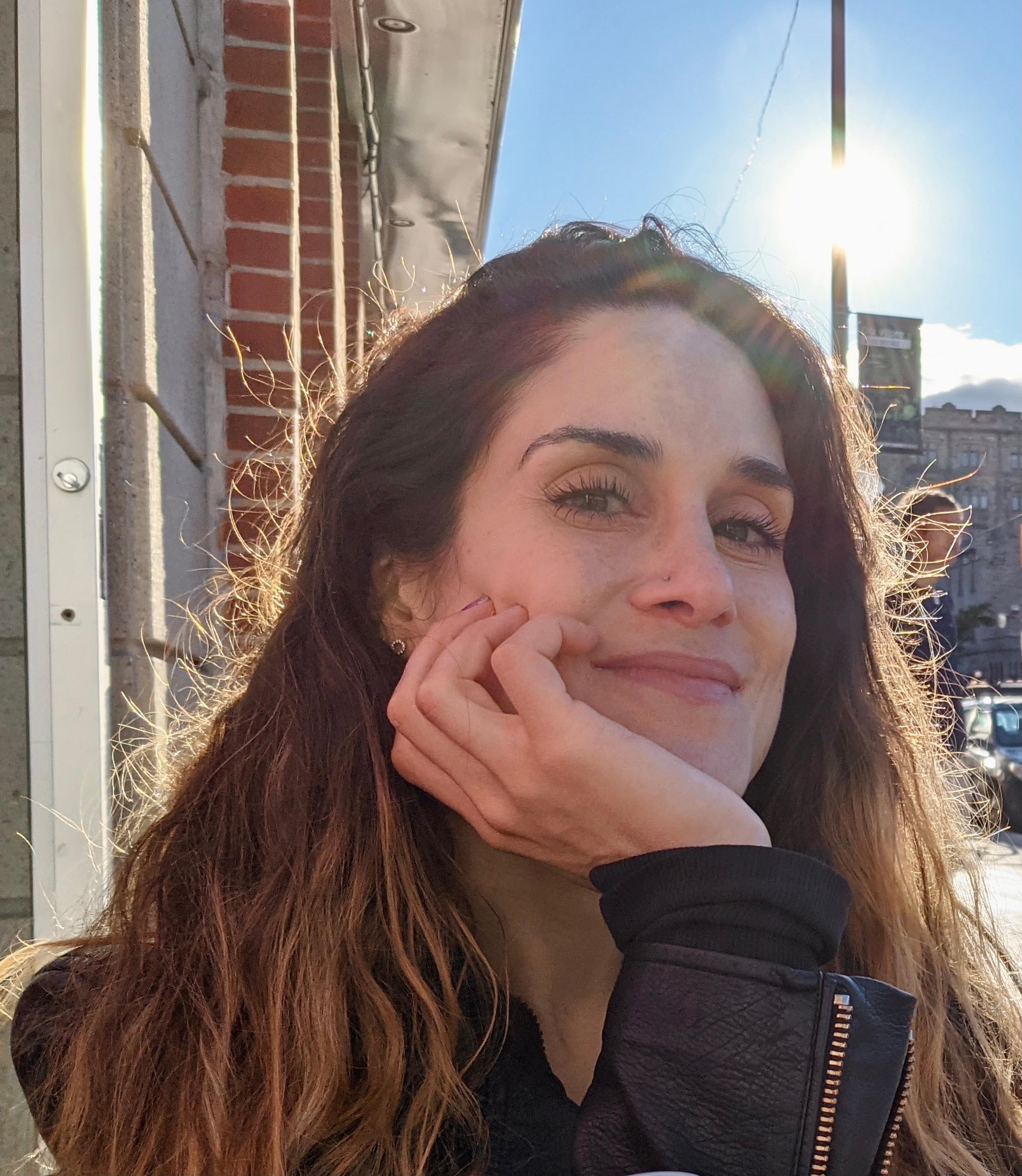

- Relapse is discouragingly high among those with eating disorders. Making a relapse prevention plan can be a key step to protecting recovery.
- A relapse prevention plan should include certain components, like skills needed to maintain recovery, signs of a potential relapse, motivating reasons to recovery, and an action plan.
- A relapse prevention plan should be made with a patient's treatment team and supports before stopping treatment.

Somewhere along her eating disorder recovery journey, Equip Peer Mentor Gabrielle Terzano hit a crossroads: she was out of treatment, but could feel her eating disorder starting to creep back in. “I thought I had recovered, but just because you reach weight restoration doesn’t mean your thoughts are gone,” she says. “I had to continue to challenge myself and my thoughts. I leaned on friends who had similar experiences, and my family knew which eating disorder red flags to look out for and how to support me in the moment.”
The ability of Terzano and her support network to spot those red flags and jump into action was thanks to what’s known as a relapse prevention plan. Experts characterize a relapse prevention plan as a method for identifying thought patterns that have the potential to lead to eating disorder behaviors after treatment ends. It’s often one of the last steps of treatment—but definitely not one to skip.
What is a relapse prevention plan—and why are they important?
While lasting recovery is possible for everyone, eating disorder relapse is discouragingly common. While there's various data around just how common it is, research puts the overall relapse rate somewhere between 22% and 51%, and the risk is highest during the first months after treatment ends (though it can happen anytime). This high relapse rate is in part due to shortcomings on the treatment side—not using evidence-based treatment, not setting high enough weight goals, not involving a patient’s support network—but regardless the reason, a relapse prevention plan can help bolster someone’s chance of maintaining their recovery long-term.
“A relapse prevention plan, sometimes called a maintenance plan, is essentially a go-to roadmap for lasting recovery,” says Therapist Lead and Clinical Supervisor at Equip, Brittney Lauro, LCSW. “We know that recovery is not linear. A relapse prevention plan helps folks think ahead and plan for challenges that can arise, while reflecting on what has worked well in treatment. It can also guide folks in knowing when and who to reach out to when the going gets rough.”
Equip Family Mentor Lisa Stein says that by the time her daughter moved away for college, she had stopped active treatment for her eating disorder. “When this happened, I didn't have a specific written relapse prevention plan in place,” Stein says. “Since joining Equip, I’ve created a written agreement with my daughter to protect her continuing recovery. She has now lived successfully for over three years in dorms, with roommates, and now in her own apartment. Each time we had to adjust the relapse prevention plan to accommodate her living situation and set her up for success and support.”
Equip therapist Sasha Solov, LSW adds that a relapse prevention is important because it allows patients and families to recognize that even when someone is discharged from formal treatment, ongoing success requires active engagement. “A relapse prevention plan allows us to be proactive and cope ahead for the inevitable ups and downs of recovery,” they say. “Rather than feeling like a slip-up is a full-blown catastrophe, it allows you to have a clear plan in place for how to respond and get back up when you stumble or fall.”
Lauro emphasizes this point, explaining that “a written document makes coping skills easily accessible and helps ensure a ‘lapse’ doesn’t turn into a full relapse. The act of creating a plan helps folks reflect on their progress in treatment and consolidate the information they’ve learned; not having a plan can make the road ahead tricky. It’s far more challenging to navigate surprises if you have to ‘think on-the-fly’ as opposed to having a ‘go-to’ that can lead you in the right direction.”
A relapse prevention plan is particularly important when patients go to treatment outside of their daily life—residential care or an in-person IOP or PHP, for instance—because the transition from these highly contained settings to the “real world” can be quite jarring. “Going out into a world that’s going to challenge you with diet culture every day will be tricky,” Terzano says. “I like to call it the ‘treatment bubble,’ where you may be protected from external triggers. In treatment, you may have all the support you need to resist urges, but when stepping out into the real world, it’ll be more challenging.”
With fully virtual treatment like Equip, which fits into patients’ lives and incorporates their support network, there’s not as big of a treatment bubble to pop: patients have been living their real life and encountering real-world challenges throughout their treatment. But even so, a relapse prevention plan is still important to help strengthen patients’ recovery when they’re no longer surrounded by their treatment team.
What’s included in a relapse prevention plan?
Creating a relapse prevention plan generally takes a collaborative approach that involves many players, including the person in recovery, any caregivers or supports they may have, and their clinical team. Solov says that when various members of a person’s care team are involved in the creation of the plan, each person can contribute something unique. “Your medical provider can let you know about the best ways to monitor physical health and signs that health may be declining,” they explain. “Your dietitian can support you in figuring out how to continue with your meal plan or move on to a more intuitive approach to eating. Mentors can give sage advice on their own lived experiences with relapse prevention and ways to set yourself up for success. Your therapist can help you identify the ways you have already successfully engaged in recovery, distress tolerance, emotion regulation, and more.”
Solov considers relapse prevention plans as actionable blueprints patients and their families can use to recognize and address eating disorder relapses if and when they happen. “Such a plan will often include potential signs of a relapse— like starting to only eat safe foods, isolating, etc—and ways to intervene if those signs begin to crop up—like requesting more mealtime support, reaching out to a friend, etc,” they say. “It can also provide specific guidelines for when an increased level of care may be indicated.”
According to Lauro, there are five essential components to a relapse prevention plan:
- Ongoing skills used to maintain recovery. This might be something straightforward, like sticking to a regular eating pattern, or it might involve specific skills from DBT, CBT, or other modalities, such as “urge surfing” (waiting for an urge to pass without doing anything about it), or distraction/delaying techniques (mindfully using distraction to make it through a triggering situation or ride out an eating disorder impulse).
- Tools to navigate particularly challenging moments. Whether it’s a short-term challenge—like stress at work or school—or a more long-term upheaval—like divorce or the birth of a child—it’s important to identify specific tools to use during tough moments. At Equip, patients and their loved ones learn a panoply of coping skills and strategies from different modalities, and can work with their treatment team to identify which ones would be most helpful in distressing moments.
- Awareness of relapse warning signs. In order to prevent a relapse, it’s important to know what to look out for. Create a list, which should include specific behaviors as well as weight targets set forth by the treatment team (if applicable).
- A plan of action. You need to know what to do when those warning signs crop up. This part of the relapse prevention plan should lay out specific actions to take depending on what signs you’re noticing, including when to use coping skills, when to reach out to providers, and when to go to a high level of care or hospital.
- Motivation for recovery and things to look forward to. When someone starts to slip back into old behaviors, it can be helpful for them to remember the “why” behind treatment. Writing out a list of goals, affirmations, and reasons to recover makes it simple to tap back into a sense of motivation when it seems to disappear.
In addition to the above, Stein calls out some particularly important aspects of recovery to consider. “Whether your loved one lives with you or independently, it's important that the relapse prevention plan makes clear how a healthy day looks including sleep, meals, activity if appropriate, and supportive relationships,” she says. “A relapse prevention plan should spell out what continuing treatment, if any, should take place. It should have a plan for mental health care including seeing a psychiatrist for medication management or a therapist if deemed necessary. Be clear how often these appointments will take places and who will make them”
Stein also advises mapping out any necessary medical monitoring, including weight checks, but offers the reminder that weight fluctuations are not necessarily indicative of a relapse. “Real life happens and sometimes people get distracted by the business of their lives,” she says. “This is the perfect opportunity to remind yourself or your loved one about the relapse prevention plan and work to get back on track. For friends and family, it’s important to continue talking to your loved one about their recovery and validating the hard work they’re doing. Always keep your eyes and ears open and be a safe place for your loved one to talk about thoughts or behaviors that might be creeping back in.”
Solov recommends viewing the plan as a living, breathing document that can always be updated and adjusted as needed. “The actual logistics of making a relapse prevention plan entail finding a template that works well for you—there are many out there,” they recommend. “You can tweak it to be most relevant to your own life, either on your own or with your treatment team.”
When to start creating a relapse prevention plan
A relapse prevention plan is simply a written document intended to help prevent an eating disorder relapse after treatment, so anyone can create one at any time, but it’s generally recommended to do so with the support of experts. “Some folks may take the initiative to create one on their own, others may have it integrated into their formal treatment process, depending on the treatment modality being used,” Lauro says. “You can absolutely create a relapse prevention plan after you’ve finished treatment, however it’s recommended to create it while you’re still linked to additional support.”
In terms of when that plan gets made during treatment, it can vary. “Often we begin formulating a relapse prevention plan in the later stages of treatment to prepare for discharge, but they can also be relevant when someone is about to go through a transition, particularly one that may come with increased independence,” Solov says. “For example, I’ve worked on relapse prevention plans with families when their child is about to go to or return to college. We might use a green/yellow/red light system to identify when the person with the eating disorder is doing well with recovery (green), when they may be slipping back into eating disorder thoughts and urges and require added support (yellow), and when they’re actively engaging in eating disorder behaviors and require a higher level of care.”
Lauro can think of many scenarios in which a relapse prevention plan has been crucial in her patients’ success. “This comes up frequently for the college-age folks I’ve worked with over the years,” she says. “I’ve had other folks revisit their old relapse prevention plan before their wedding to assist with dress shopping. The same has been true for folks who have chosen to become parents and are dealing with pregnancy and postpartum body changes. Revisiting skills and stepping away from unhelpful conversations prove to be effective no matter how much time passes.”
Terzano says that in her case, creating and implementing a relapse prevention plan with the support of her family and therapist was crucial to her ongoing recovery. “Over time, I adopted an anti-diet mentality and realized that body image concerns may always be around, even if I was recovered,” she says. “The only difference is, now I’m not using my eating disorder behaviors to cope with negative body image. I use my coping skills toolbox from my relapse prevention plan that gives me healthier ways to cope with negative feelings that have nothing to do with changing my body.”
- Keel, Pamela K et al. “Postremission predictors of relapse in women with eating disorders.” The American journal of psychiatry vol. 162,12 (2005): 2263-8. doi:10.1176/appi.ajp.162.12.2263
- Walsh, Timothy et al. “Time Course of Relapse Following Acute Treatment for Anorexia Nervosa.” The American journal of psychiatry vol. 178,9 (2021): 848-853 https://doi.org/10.1176/appi.ajp.2021.21010026







